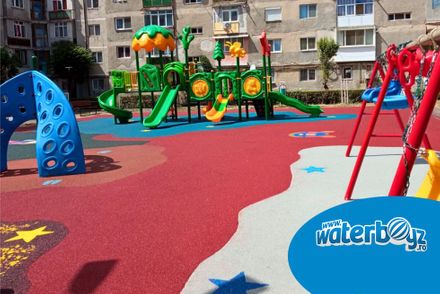The poured in place rubber flooring is a synthetic, resistant, and flexible material that can be applied directly to the ground surface of a children's playground. Its features include durability, wear resistance, shock-absorbing capabilities, and adaptability to different weather conditions. The poured in place rubber flooring is available in a variety of colors.
How the poured-in-place rubber flooring can be used
This material is frequently used in the construction of sports fields, children's playgrounds, running tracks, or other recreational spaces. Due to its properties, poured in place rubber flooring is considered a safer and more comfortable alternative for athletes or children playing on these surfaces.
The advantages of poured in place rubber flooring are numerous. It is a durable material, resistant to various weather factors: extreme temperatures, UV rays, rain, hail, strong wind gusts, snow, etc. Therefore, it is suitable for long-term use in varying climatic conditions, specific to different regions or altitudes in the country. It also offers a safe and comfortable playing surface, having anti-slip properties and shock absorption.
While the initial costs for installing poured in place rubber flooring may be higher than those for other materials, maintenance costs are much lower. This material does not require frequent repairs and is wear-resistant, making the initial investment profitable in the long run.
Poured in place rubber flooring is easy to clean and does not require special maintenance. It is sufficient to be washed with regular water and soap to maintain its aesthetic appearance. Also, this material does not stain and does not retain dirt, making it ideal for public spaces and open areas.
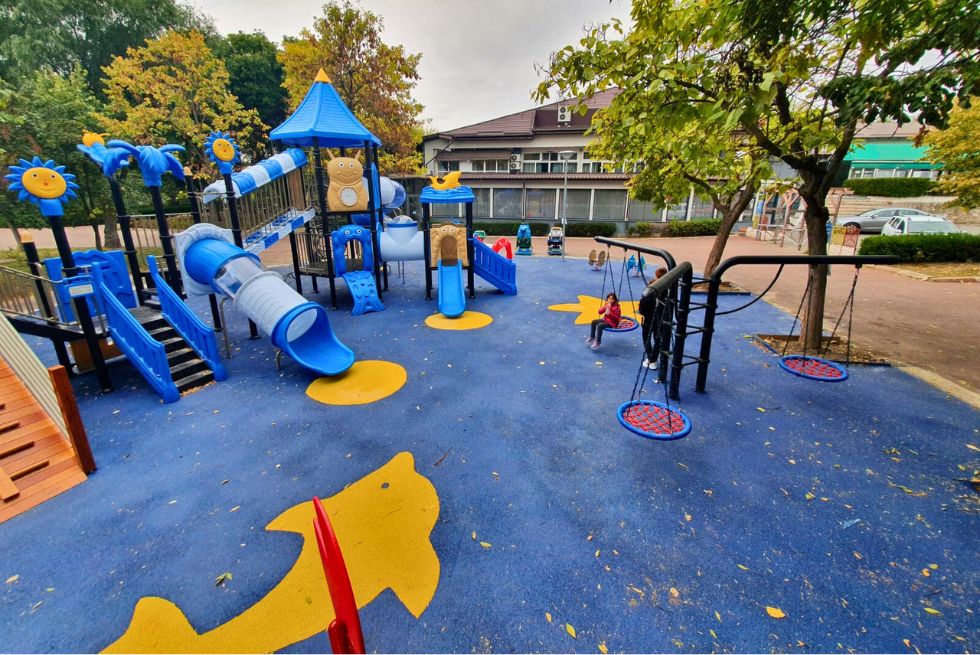
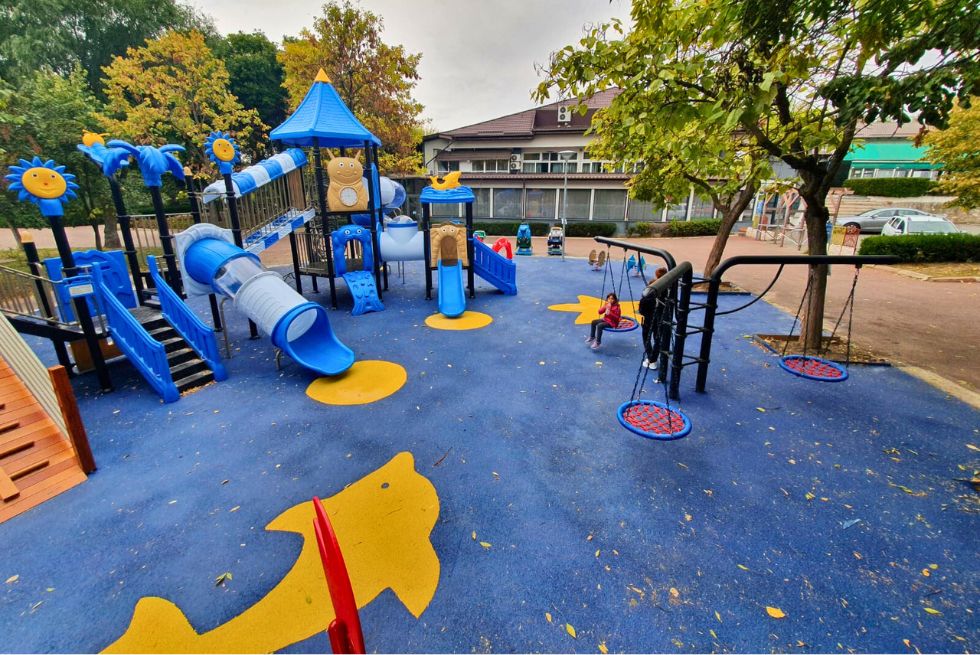
How Poured-in-Place Rubber Flooring is Obtained and Installed
The manufacturing process involves several stages and the use of specific materials or techniques to achieve the desired results. Here's what you need to know about the production of poured-in-place rubber surfaces:
Raw Materials and Their Preparation: This type of surface is produced from rubber granules, derived both from natural sources and through the recycling of used tires. These granules must be cleaned and processed before they enter the actual production process. Cleaning involves removing impurities and other foreign materials, while processing ensures the granules are the right size and have a specific composition.
Pouring and Vulcanization Process: The rubber granules are mixed with a binder (usually a type of resin) and then poured into molds or applied directly to the surface where the flooring will be installed. This pouring process allows for a smooth surface without prominent roughness. After pouring, the material undergoes a vulcanization process, which involves heating the mixture to high temperatures. This stage ensures its durability and resistance to wear and various weather conditions.
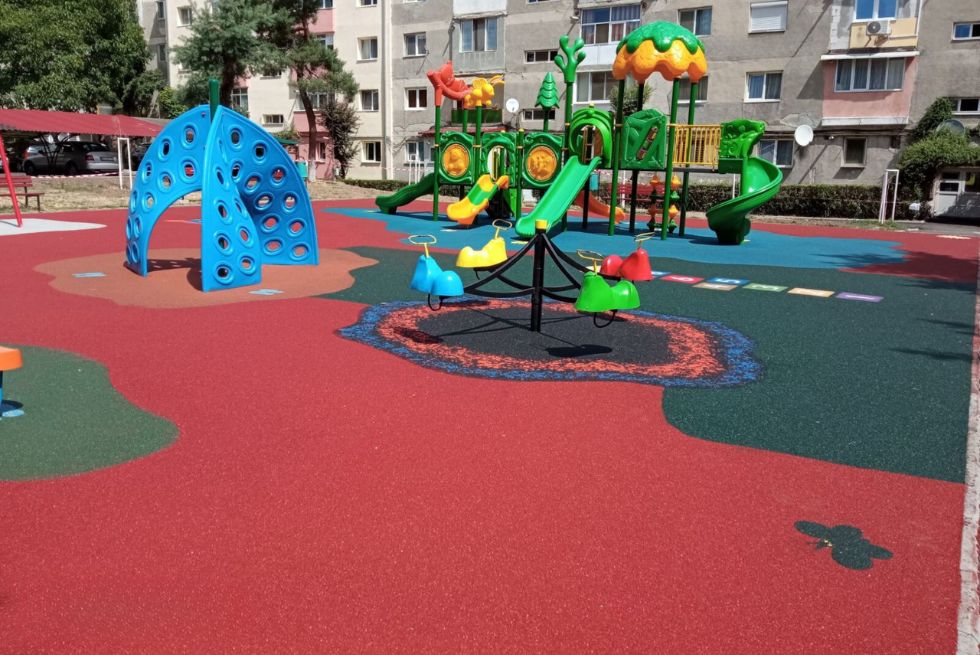
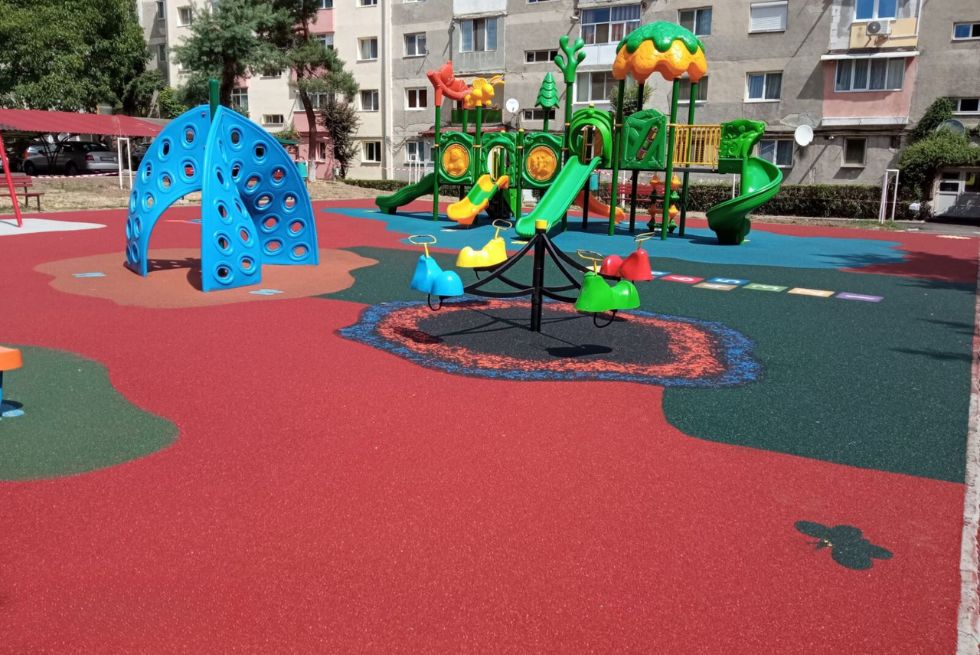
How to Install Poured-in-Place Rubber Flooring
Surface Preparation: The first step in installing poured-in-place rubber flooring is preparing the surface on which it will be laid. It's crucial that the surface is clean, dry, and level. If the surface isn't flat, the rubber can have uneven spots after installation, which could lead to accidents. In some instances, it might be necessary to install a base layer, such as asphalt or concrete, to ensure a solid foundation.
Materials and Tools Needed: Specific materials and specialized tools are required for the installation of poured-in-place rubber flooring. These include measuring tools to ensure accurate placement, cutting tools to shape the material to the desired size, and adhesive to secure the rubber to the prepared surface. A roller might also be used to ensure the material lays down uniformly.
Installation Process: Installing poured-in-place rubber flooring involves applying it to the prepared surface, then cutting and shaping it to the required size. Once the rubber is properly positioned, it's affixed using adhesive. It's essential that this process is carried out with care and precision to ensure a correct and safe installation.
Final Check: After the poured-in-place rubber flooring is installed, a final check is necessary to ensure it has been correctly laid. This involves checking the level of the rubber, ensuring there are no uneven spots or other defects. Additionally, it's crucial to check if the rubber is securely attached to the surface to prevent any future movements or slipping.
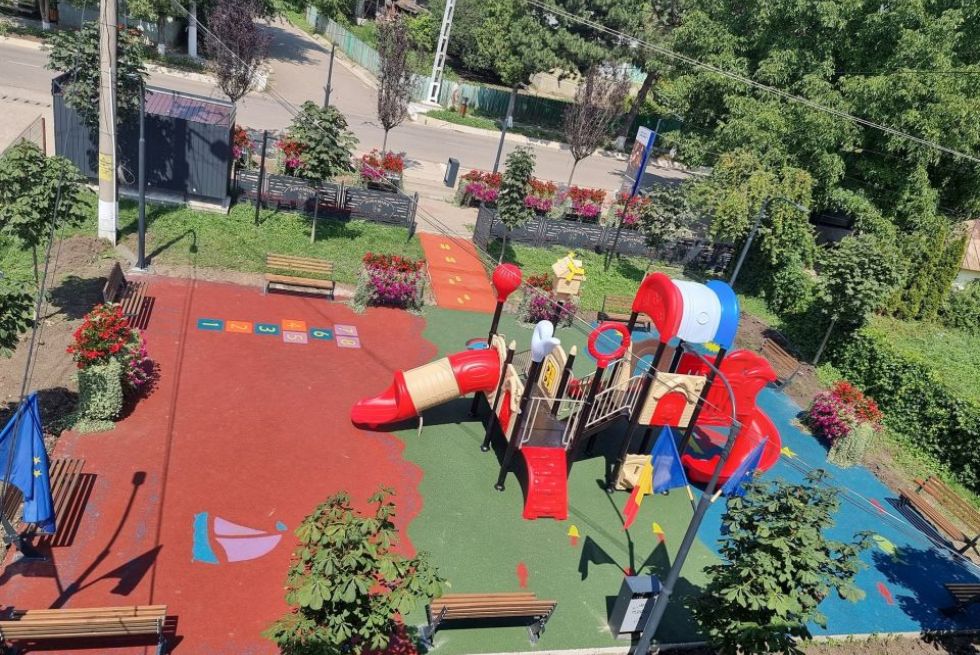
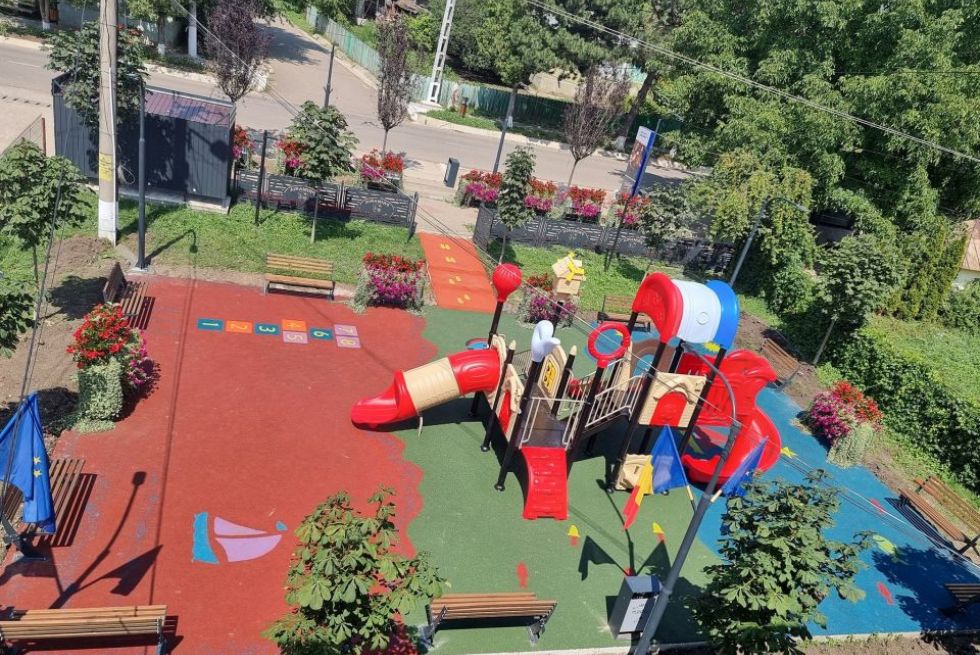
Maintaining Poured-in-Place Rubber Flooring
Here are some practical tips to properly maintain this material:
- Regular Cleaning: Poured-in-place rubber surfaces require regular cleaning to prevent the buildup of dirt, dust, or other particles that could affect its appearance or functionality. You can use a water hose or an outdoor vacuum to remove these impurities. Additionally, it's recommended to use a soft brush to get rid of any stubborn dirt.
- Protection Against Extreme Weather Conditions: Although the poured-in-place rubber surface is resistant to various weather conditions, it's advisable to cover it during winter or under extreme weather conditions to extend its lifespan. This covering can be achieved using a tarpaulin or another waterproof material.
- Use of Suitable Cleaning Products: For persistent stains or embedded dirt, specially designed rubber cleaning solutions can be used. It's vital that these don't contain harsh chemicals that could damage the material. Before using, it's recommended to test the cleaning solution on a small section of the surface to ensure compatibility and avoid potential damage.
- Regular Inspection: A general check of the surface covered with poured-in-place rubber is essential to identify and address any potential issues or wear and tear. This should include checking the material's integrity, its stability, and any signs of wear. If any signs of problems are observed, it's recommended to act quickly to prevent them from worsening.
This article provided a comprehensive guide about poured-in-place rubber flooring, from its definition, manufacturing process, installation, and maintenance, to its multiple benefits. Poured-in-place rubber has proven to be a durable, safe, and cost-efficient material, adaptable to various conditions, making it an excellent choice for various uses.
However, making the right choice and proper installation requires adequate knowledge. Therefore, we recommend seeking the support of a team of specialists experienced in such projects so that the playground or sports field you manage ensures comfort, safety, and mobility when applying this material to the respective ground.




































































































































